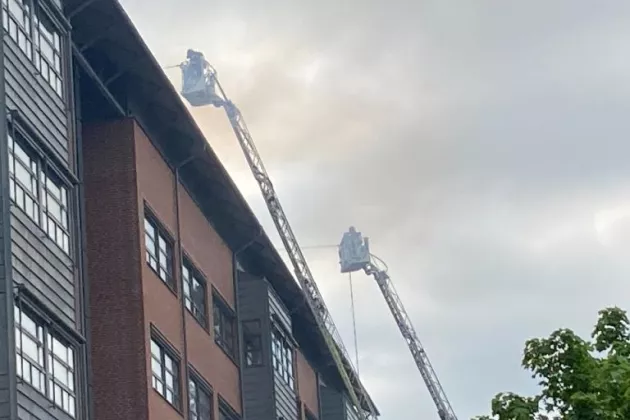Why didn't the fire alarm go off?
Fire protection in our buildings consists of fire cell division, sprinklers, fire alarms and loose fire equipment, such as fire extinguishers. A fire cell can confine a fire to that cell for 60 minutes. The fire alarm is connected to the fire cells and is triggered in the cell where the fire occurs and often also in adjacent fire cells, but not in the entire system. The emergency services then make the assessment of whether a general evacuation is needed and that the alarm should be set off for the entire building. In Saturday's fire at BMC, the alarm did not go off because the fire occurred on the roof, which is not connected to any fire cell. The emergency services assessed that only the premises on floors B15 and B14 needed to be evacuated, but were always prepared to raise the alarm if the situation had worsened. In the event of a fire, it is the police and rescue services who control the scene of the incident and who decide what to do. The fire protection worked throughout the process and there was never any risk to people in the building.
What damage was caused by the fire?
The fire itself caused damage outdoors to the roof. The extinguishing work also caused water and smoke damage on floor B15. Smoke also penetrated into a room on B14. During the course of extinguishing the fire, there was also a risk to the operations at B14, damage was avoided so that the work could be started on site again the next day. Throughout the process, the power was connected, which meant that no biological material was affected by the fire. There were plans for the low-temp freezers and the CO2 incubator on B14 if the electricity would have had to be turned off. There was a freezer on the B15 that was directly moved to C15 to avoid damage.
The only faculty area affected by the fire is the gym, which must remain closed until further notice. We do at the moment not know when it can reopen.
What happens to the damaged parts of the building?
On Sunday, floor B15 was wet vacuumed and smoke decontaminated. Since the rescue services had to open up the roof in a number of places during the extinguishing work, a weather shelter has been set up as a short-term measure to protect the building. Work to permanently restore the roof will begin shortly. Drying is also underway in the places on B15 where water has penetrated. Since only the roof and the top floor are damaged by the fire, we can keep our operations running as usual.
What was the cause of the fire?
It appears that the fire broke out in some part of the solar cell system on the roof, but the exact cause of the fire is currently being investigated by the rescue service. Until we know exactly what caused the fire, all solar cell systems on buildings A-D and F are kept shut down. A review of other solar cell systems at Lund University is also underway.


